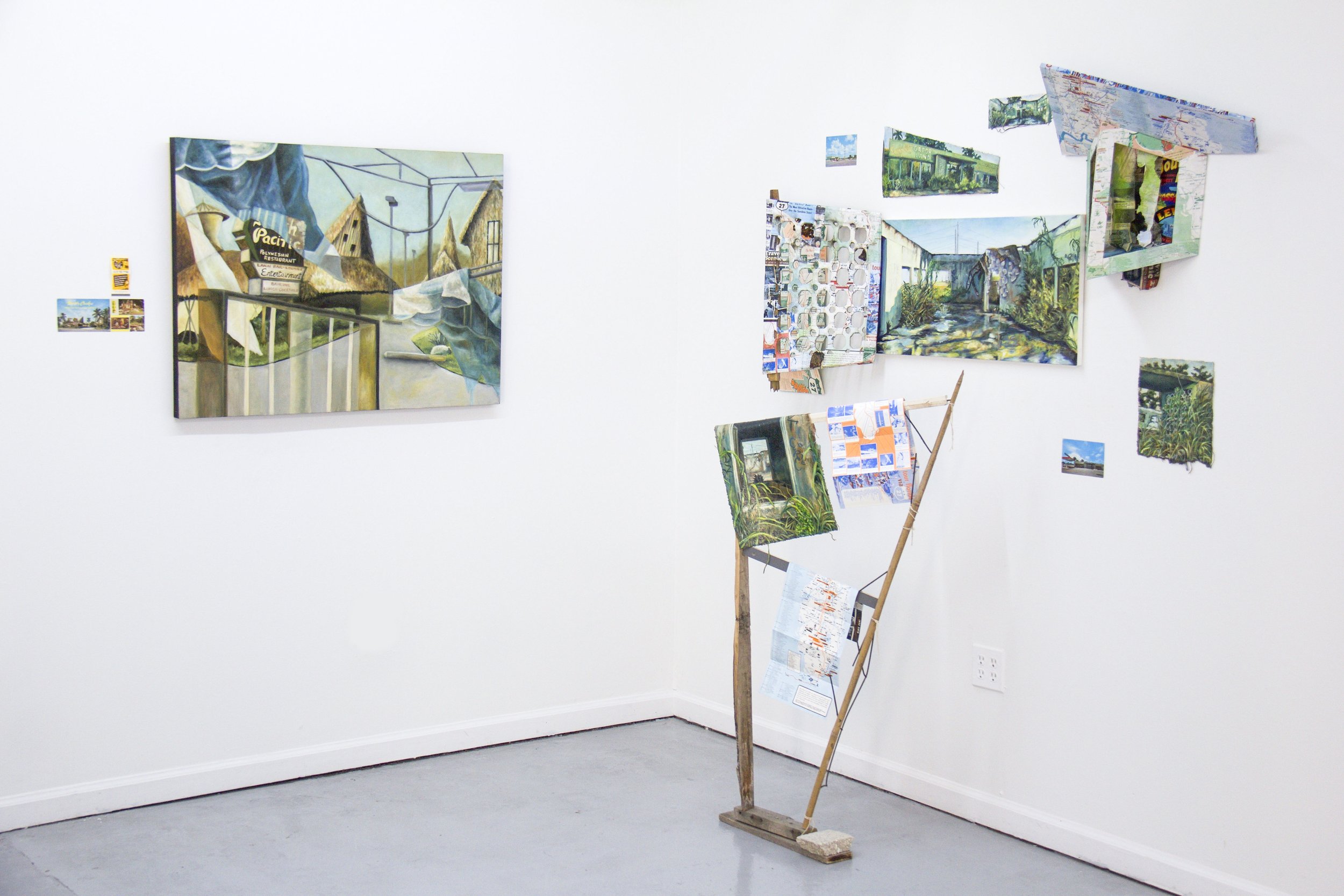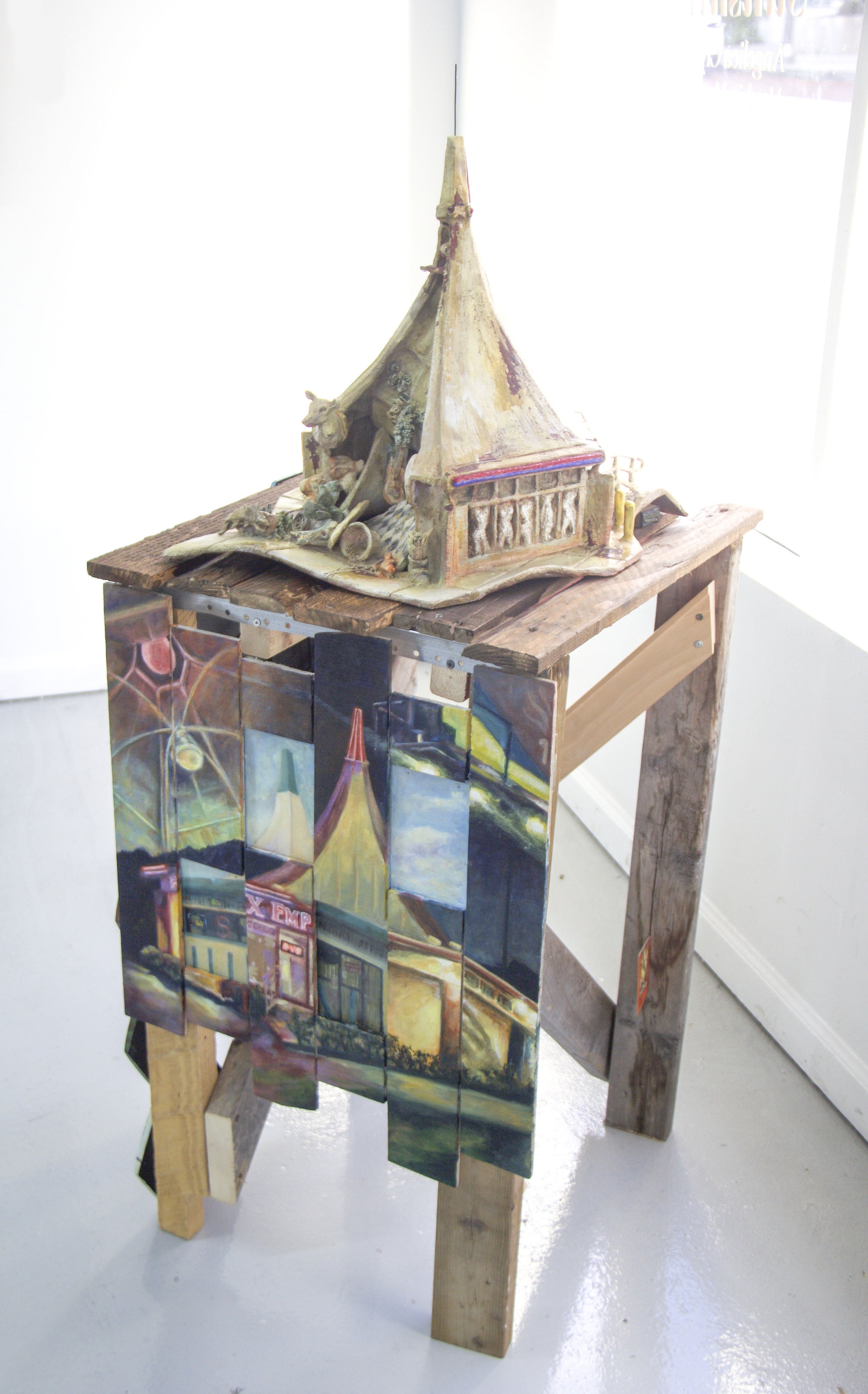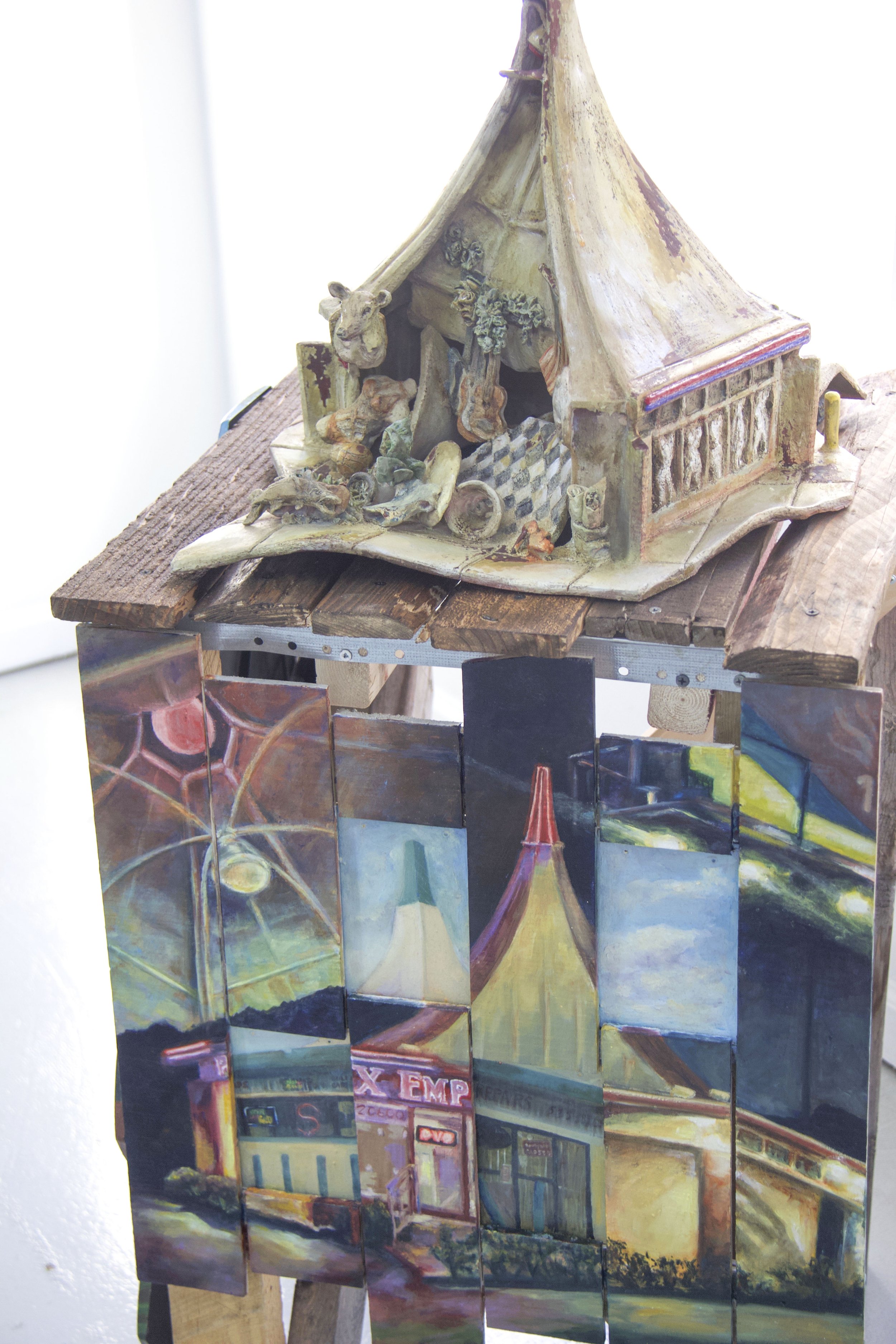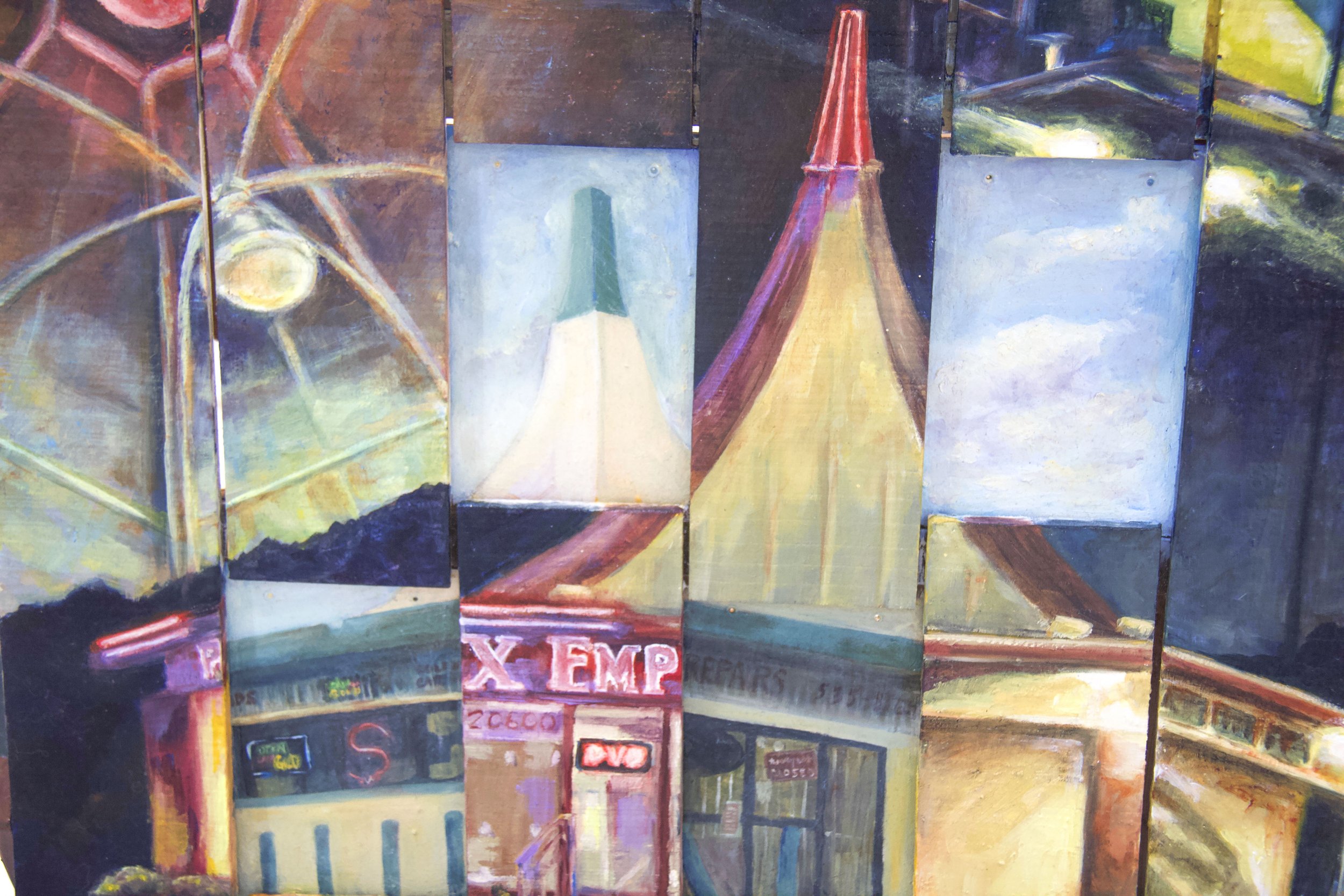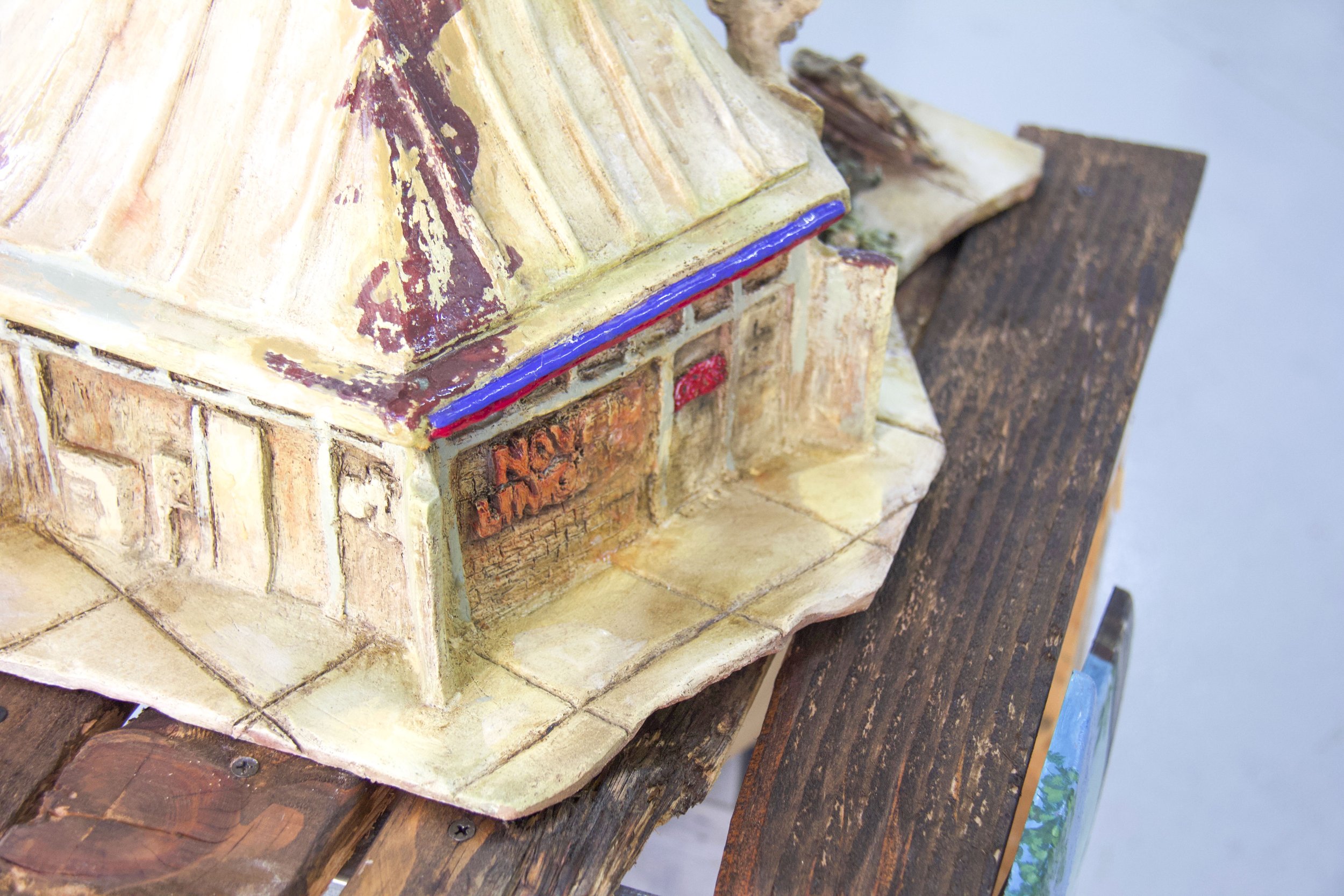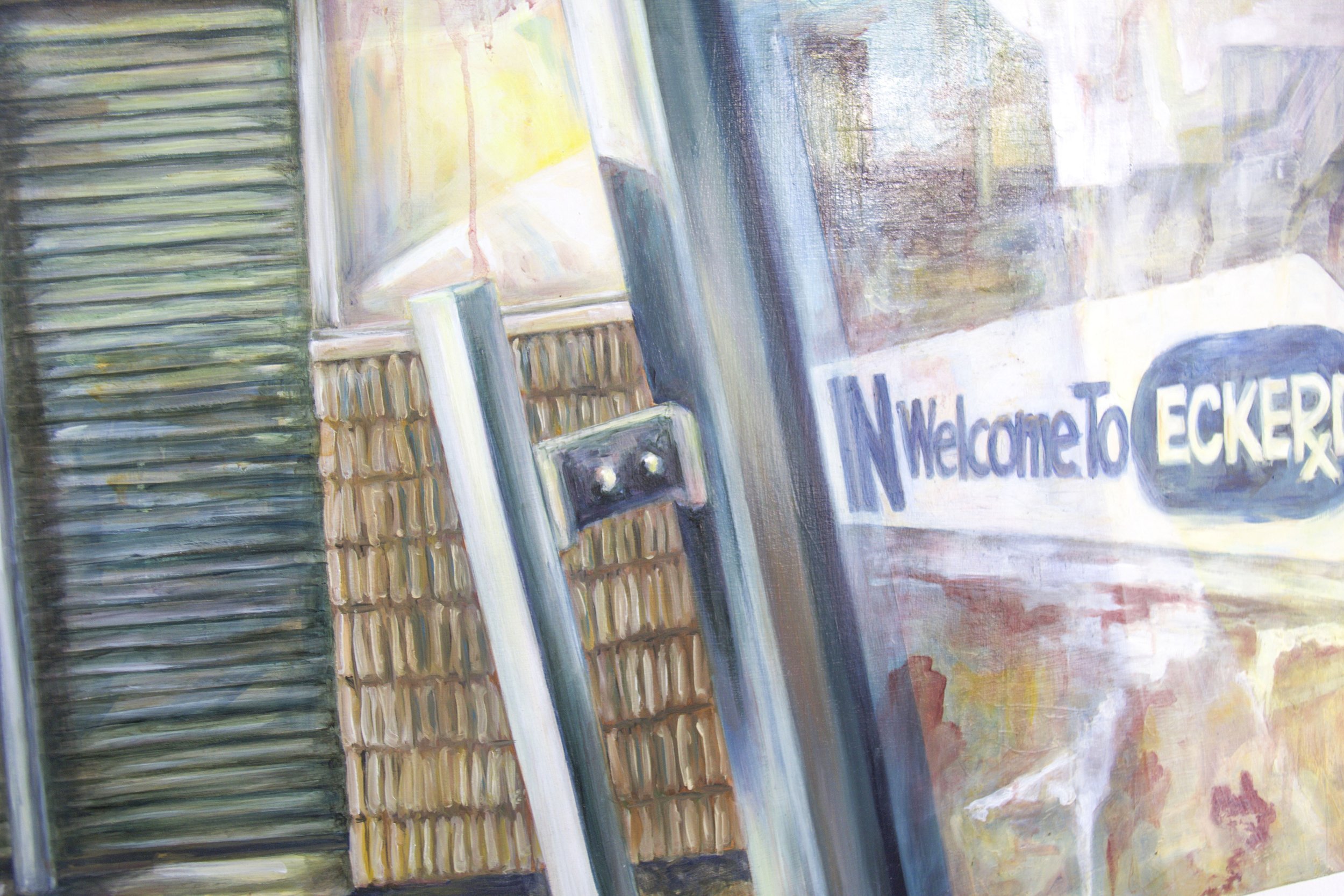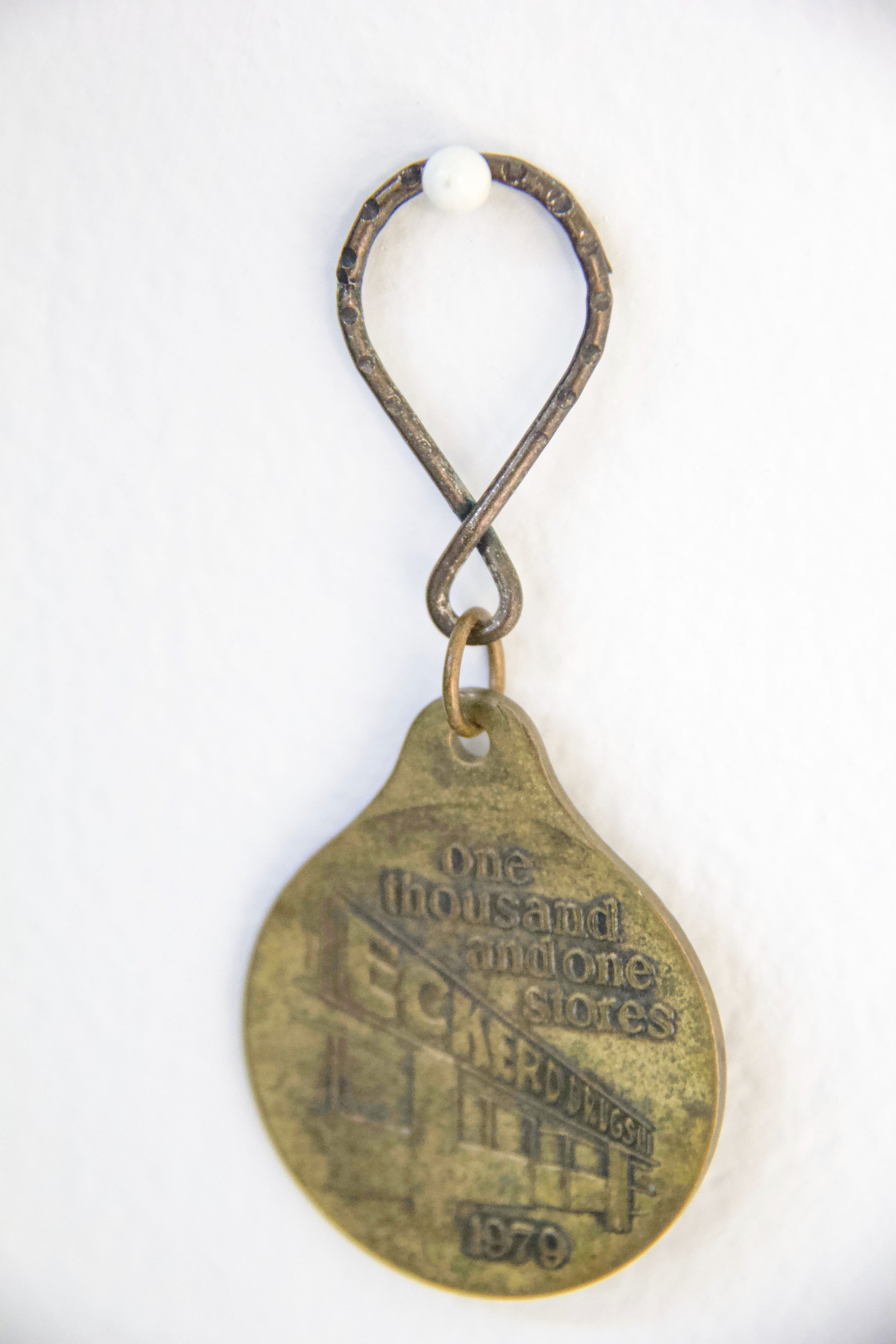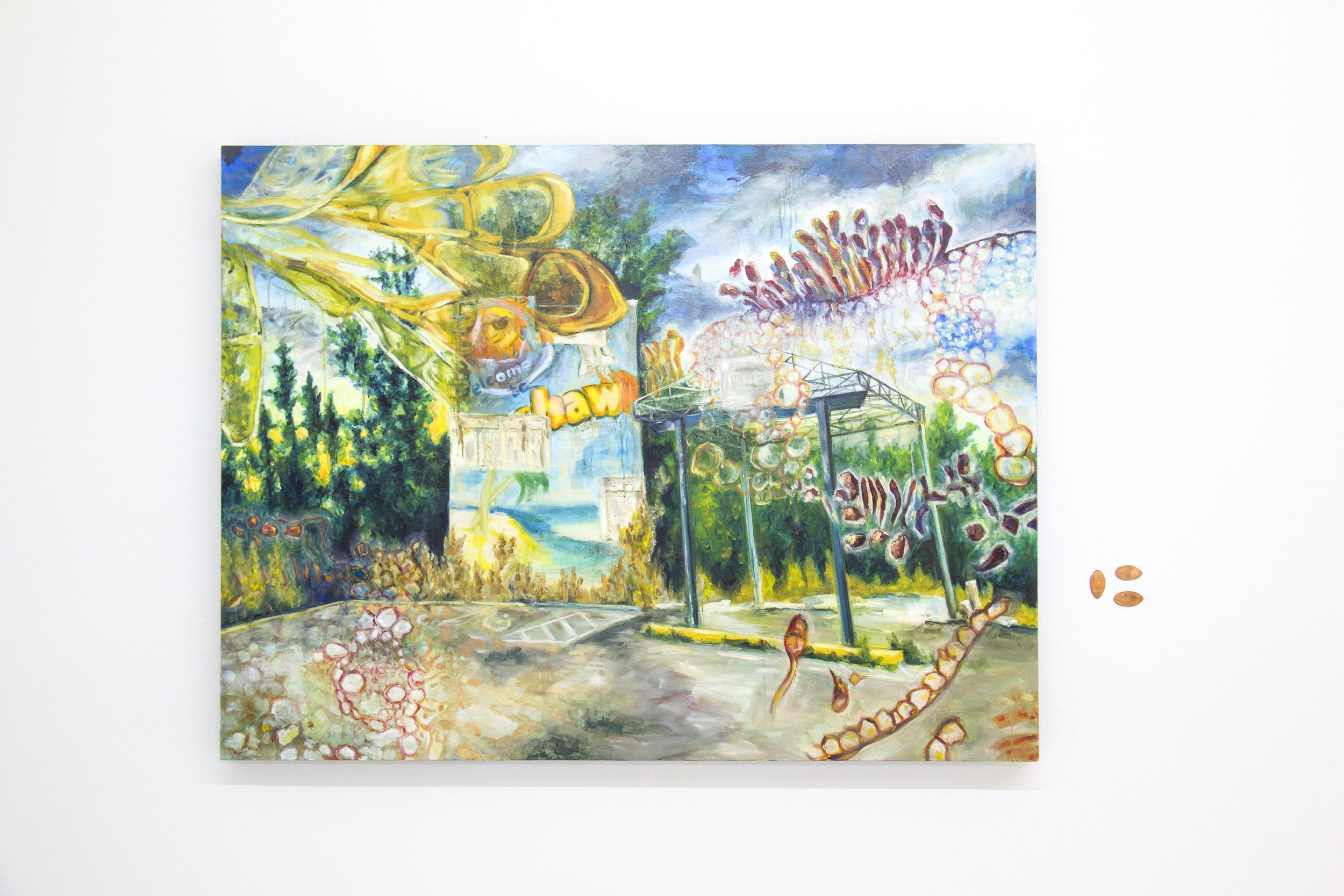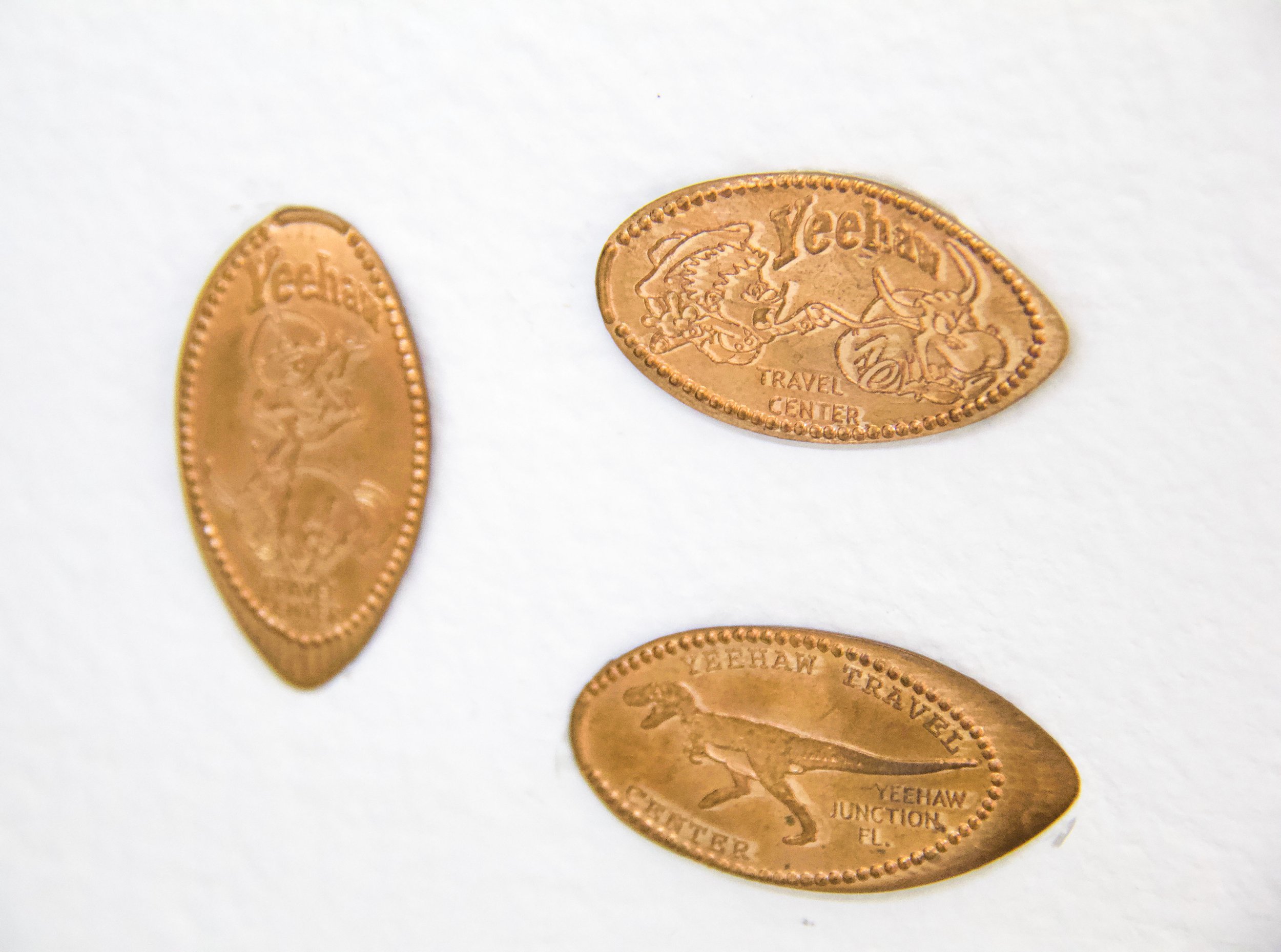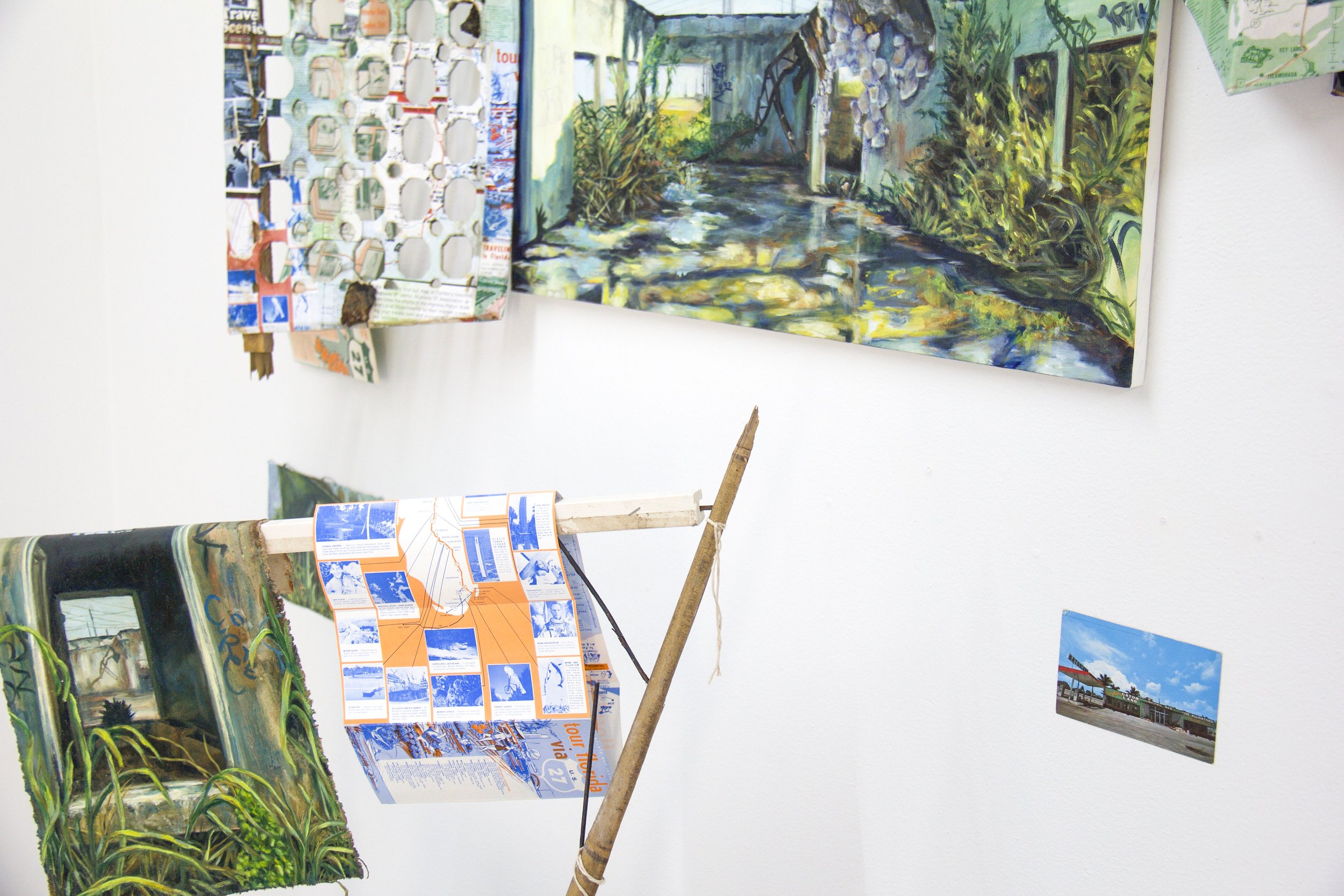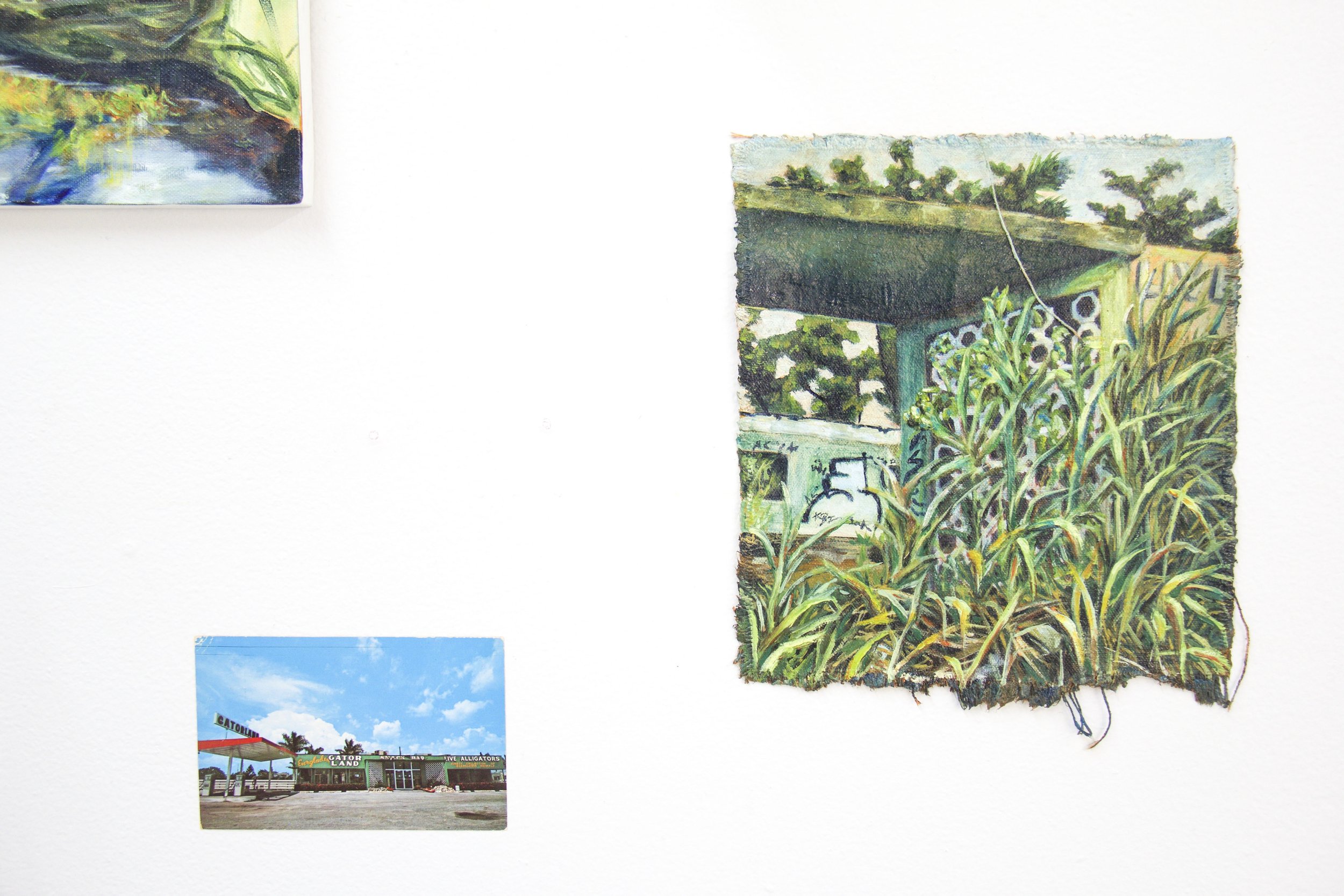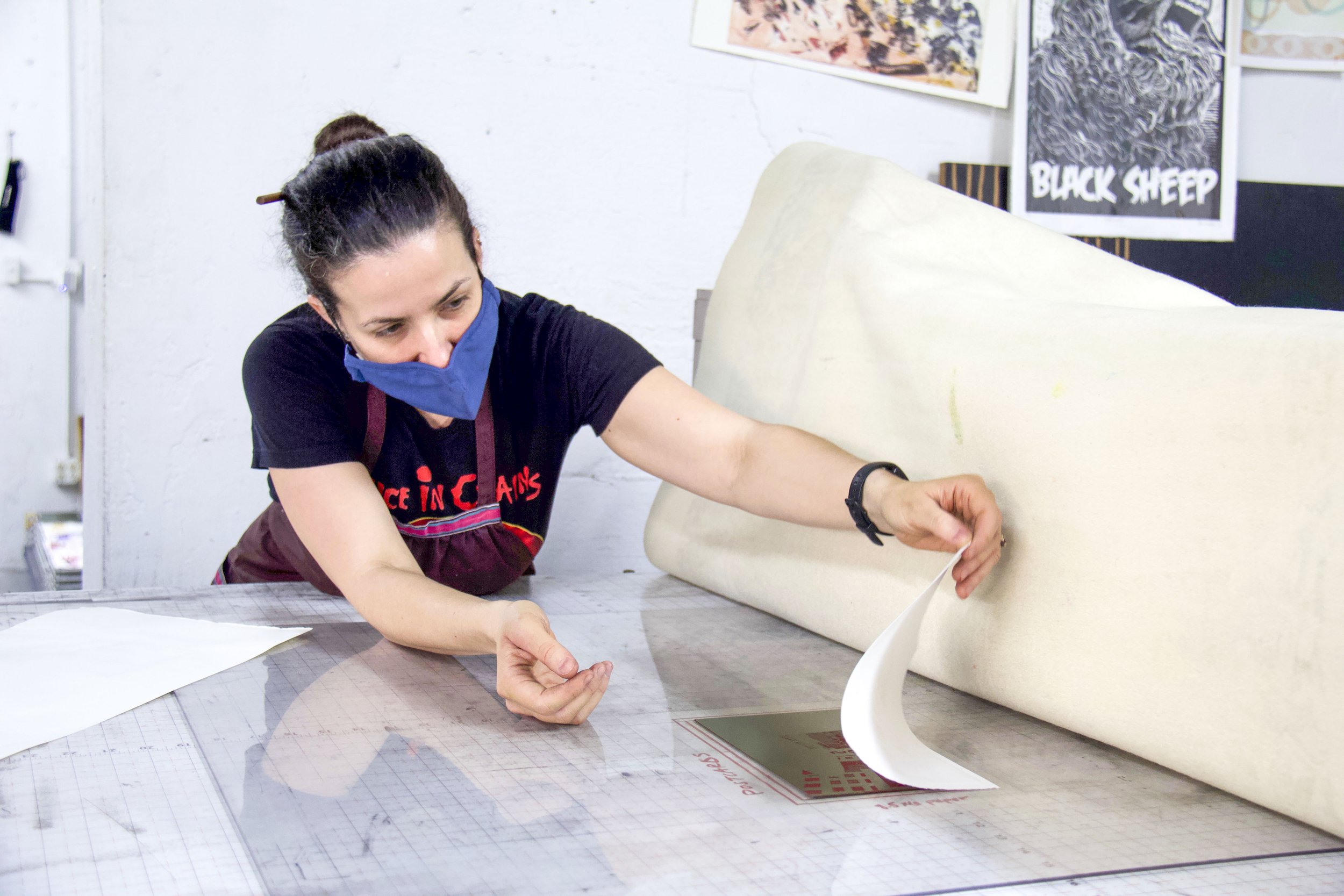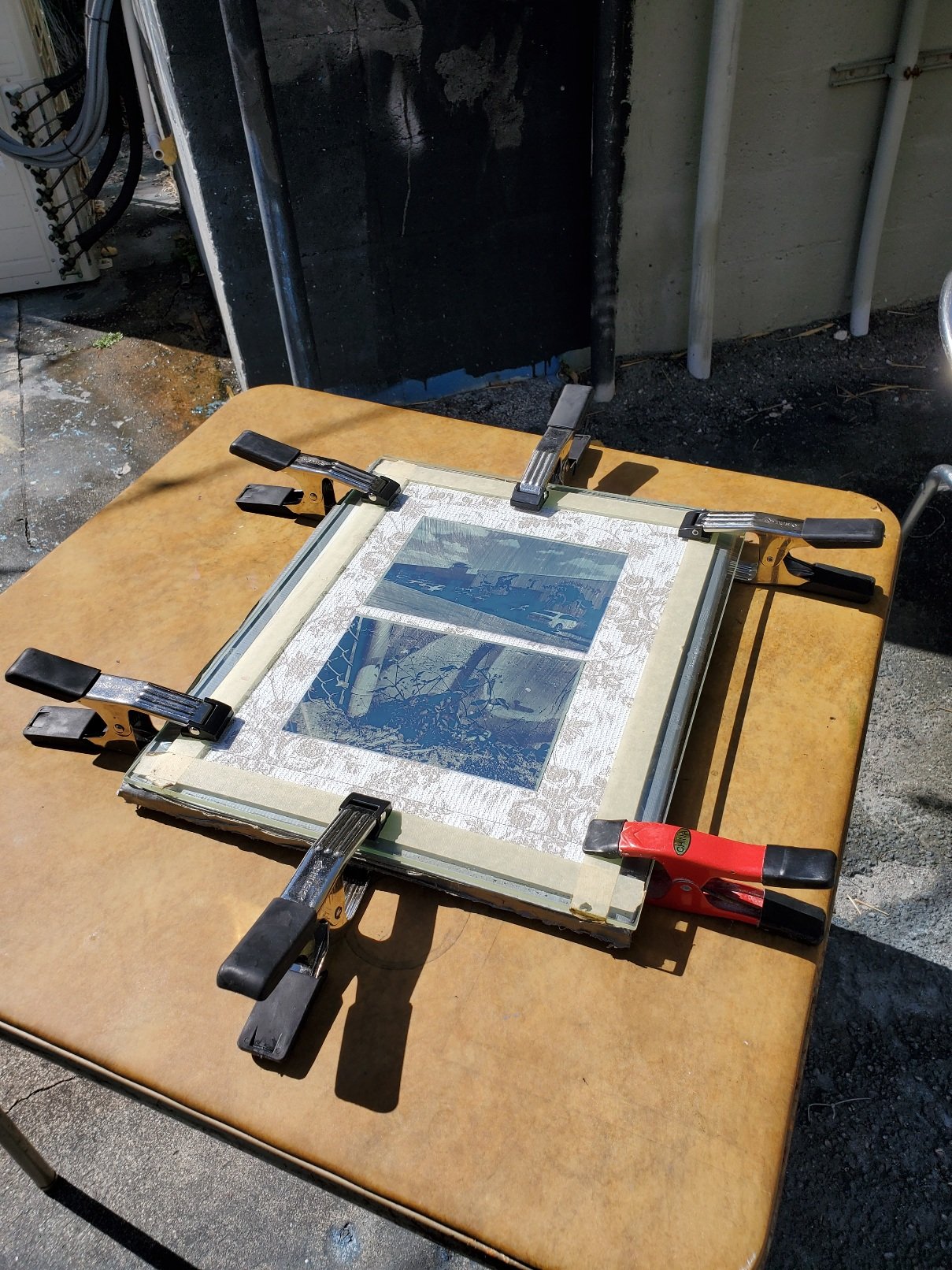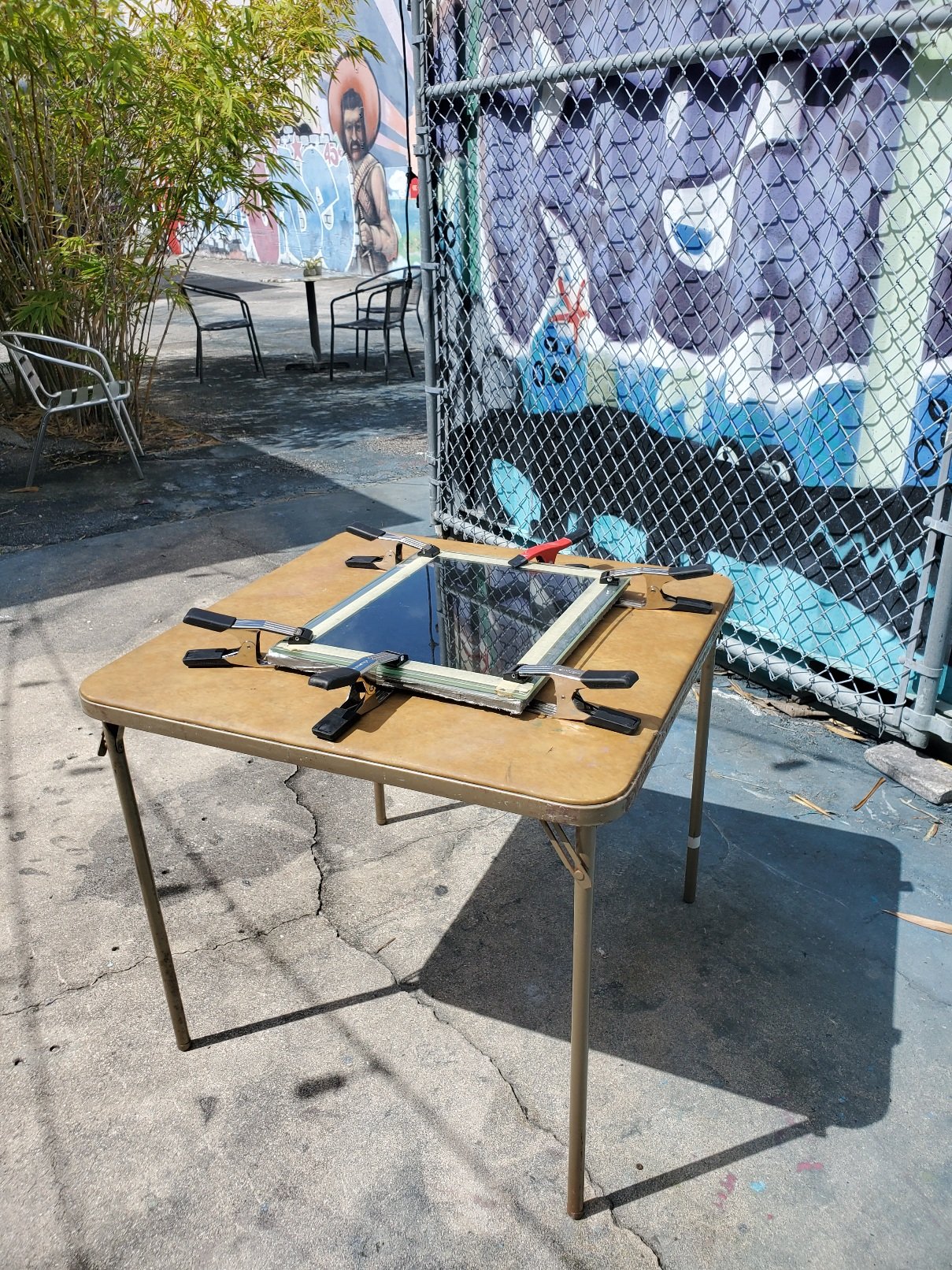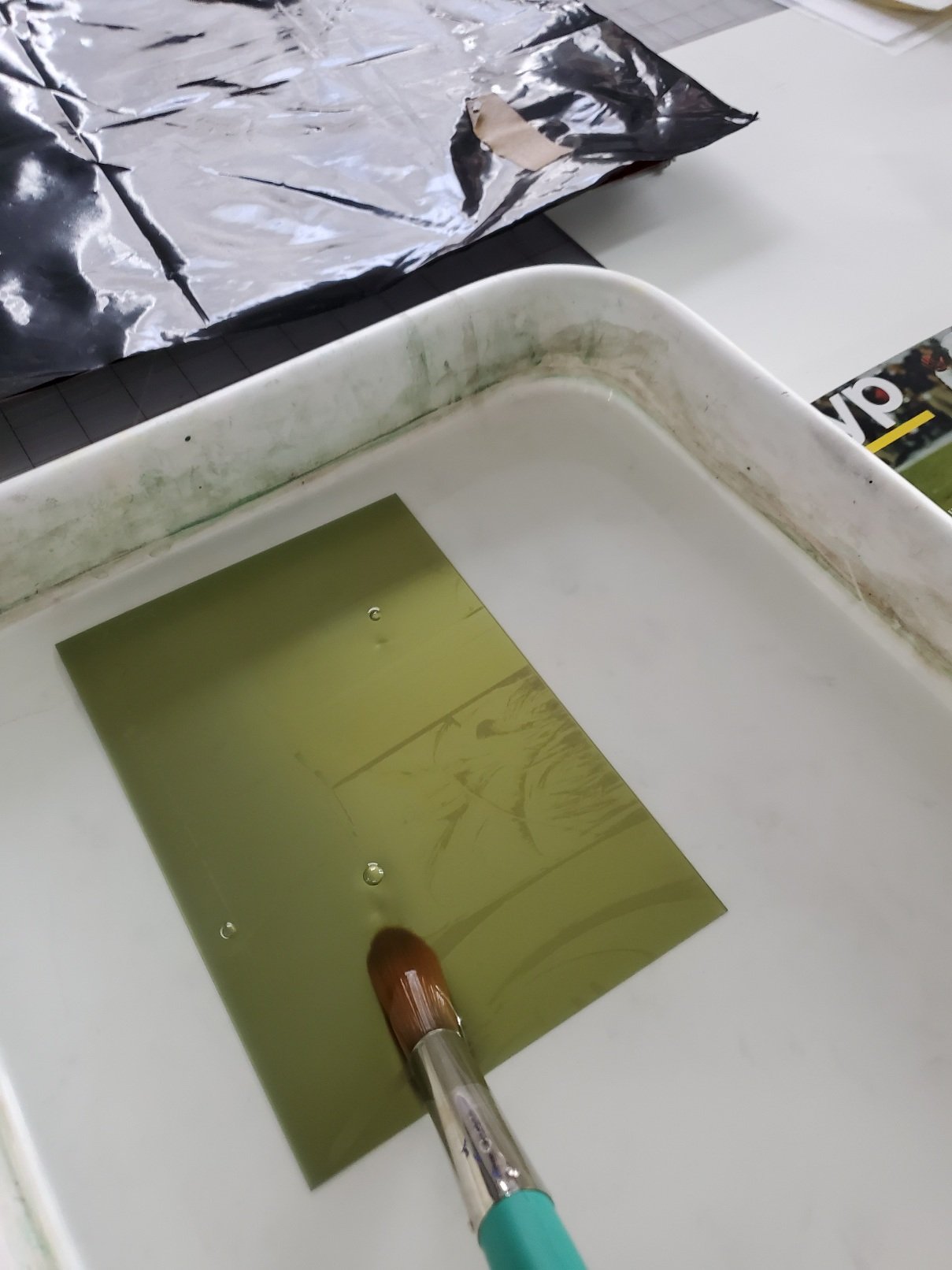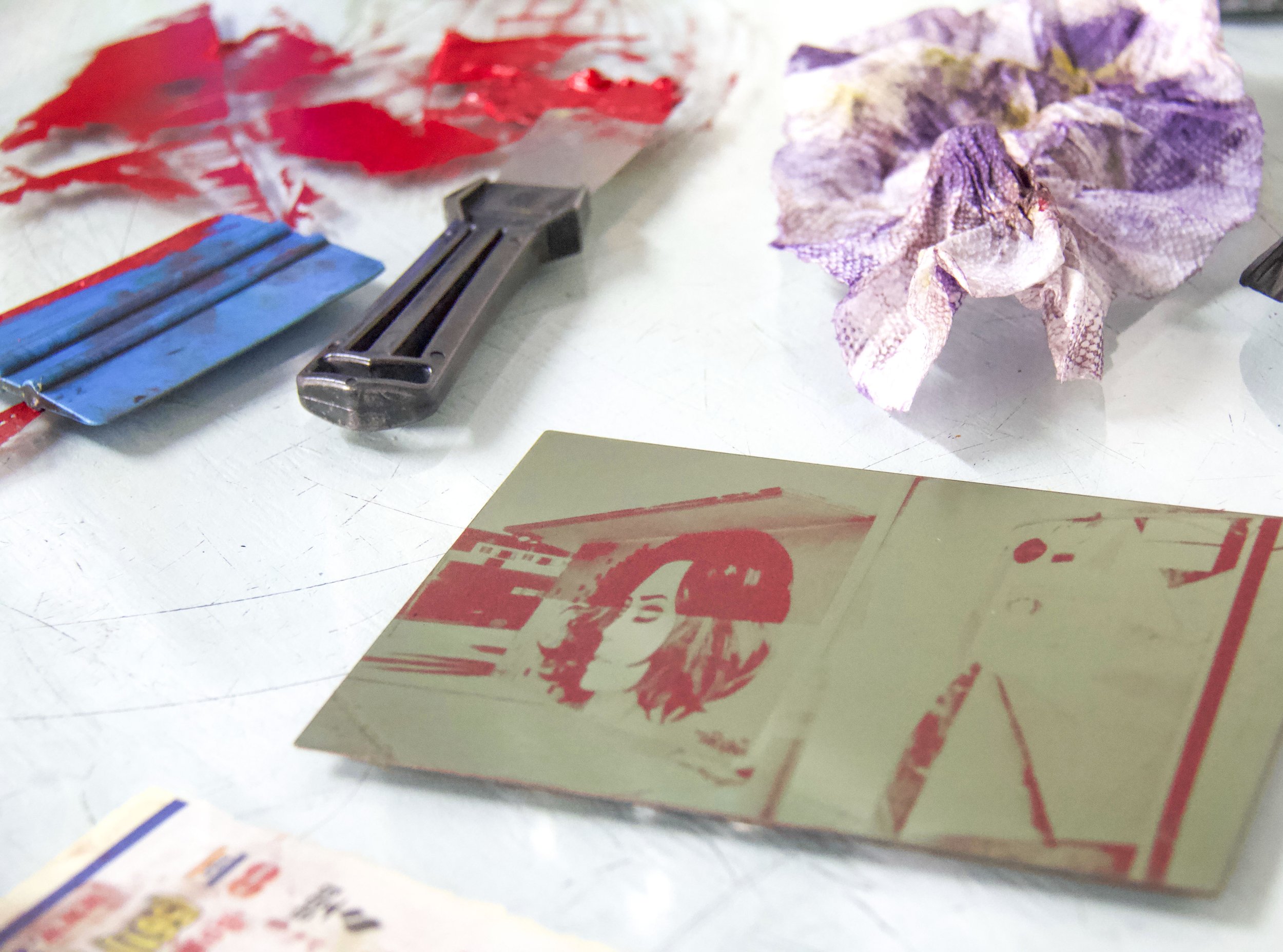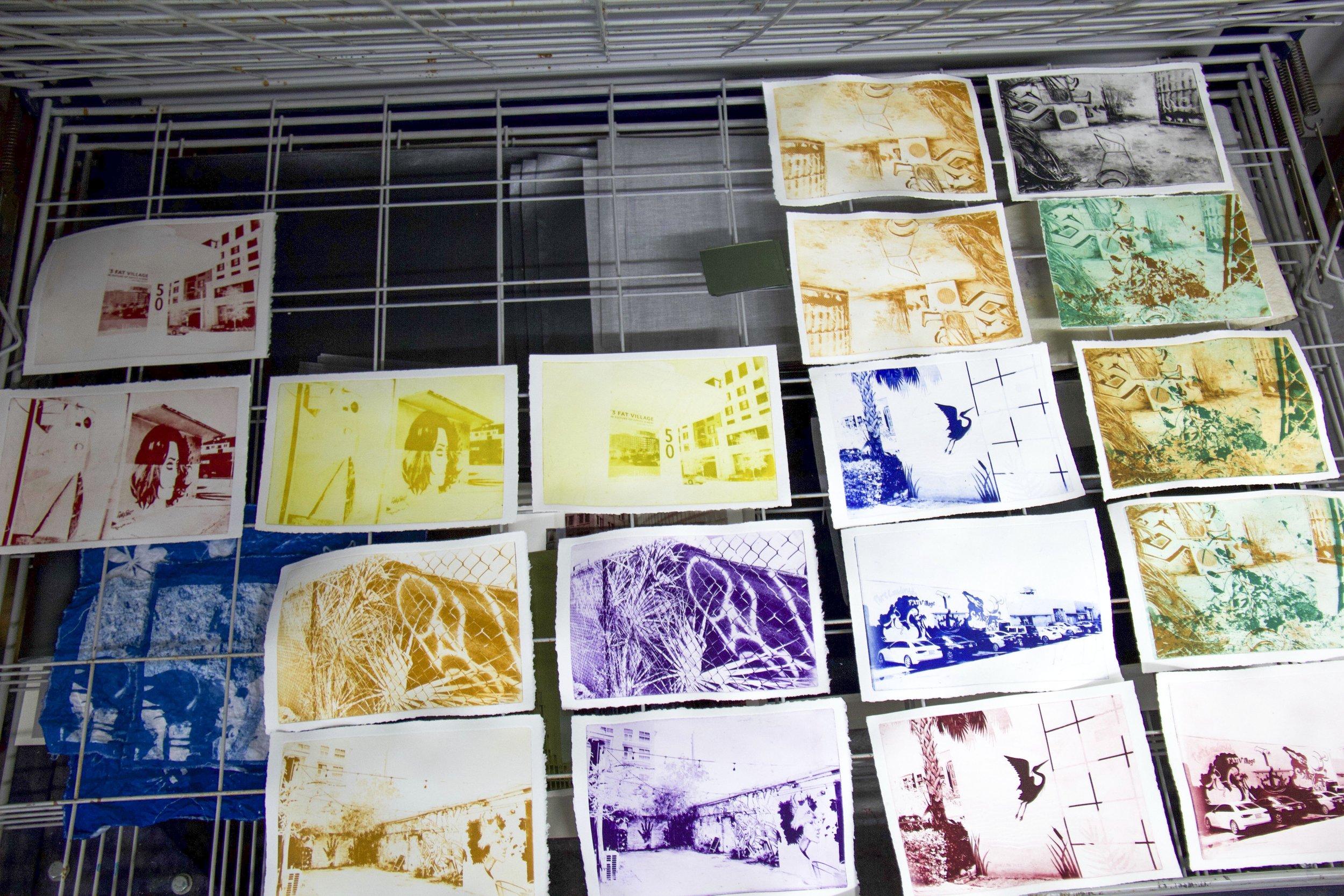A Closer Look: Land of Sunshine by Angelica Clyman
Land of Sunshine is a solo exhibition by Angelica Clyman that offers a view of South Florida that is at once sentimental and apocalyptic, real and imagined, comforting and ominous. As a painter and sculptor who is heavily influenced by growing up in Broward County and the accelerated changes it continues to experience, Clyman’s work maps a search for home in a place that no longer exists. Her fascination with local structures, aesthetics, and commercial enterprises dethroned over time is realized through six oil paintings accented with sculptural elements and found objects which reinforce the fractured worlds within Land of Sunshine.
This body of work was born from a series entitled Elegy, where Clyman explores the unseen previous life of a place. Clyman states that her interest in the history of seemingly mundane spaces began at a young age, “I’ve watched my hometown of Hollywood, Florida change so dramatically over the years. The place where I grew up is unrecognizable at times, and it also seems so far removed from the location of my parents’ stories from before I was born. I started this series with the intention of giving these forgotten places back their history and remembering them with dignity, but over time it’s given me more understanding of my surroundings and more of a sense of belonging to this transient environment.”
Appropriately, Clyman’s process begins with an expedition. She visits the site she intends to paint to thoroughly document it and her first impressions. However, in most cases, the present day locations she’s still able to access are not indicative of their often rich, unseen history. Therefore, Clyman’s practice includes in-depth research as she builds an archive of photographs or ephemera she finds from scouring all corners of the internet. She explains, “For most of these works, I find the composition by piecing together vintage images I’ve collected with photographs I take while exploring the site. It’s very important to me that I find the exact spot where the previous site once stood, so I get a feel for the location. Those impressions inform the artwork I’m about to make. I also collect ephemera associated with these places that I’ve begun incorporating into the work.”
Land of Sunshine offers a unique perspective into Clyman’s work as she invites the audience to explore her personal archive. Ephemera such as postcards, novelty souveniers, maps, and advertisements from each location’s bygone era is displayed in conversation with her paintings. Viewers become active explorers within the gallery as they make crucial observations and connections between past and present.
What follows is a unique tour of South Florida shared through insights on each work from the artist…
The South Pacific
“The South Pacific was the second piece in this series. This is a good example of the work starting out as intensely personal – my parents met at this restaurant in the 70s, when they were both working as servers. Although it was demolished before I was born, I was intrigued by their stories surrounding this place because for me it symbolized the South Florida they described me to, the one I never met. This Polynesian restaurant featured live entertainment, like many of the exciting and unique themed restaurants of the time. Located on US-1 south of Pembroke Road, by the time I painted this work it was an abandoned parking lot of a defunct car dealership, but now it’s even more unrecognizable as part of the newly constructed Atlantic Village shopping center.”
Eckerd
“Eckerd was a little different, as it was a drugstore chain with many locations and a place I experienced in my lifetime. This subject interested me because it began in Florida, and due to my childhood experiences, it evoked a sense of nostalgia for me. In the early 2000s, the chain was sold to CVS and Rite Aid, and soon remodeling began that made the stores unrecognizable as former Eckerd locations. I was surprised when I found this store off of Andrews Avenue, south of downtown Fort Lauderdale, in an abandoned state, but still retaining the appearance many Eckerd’s possessed in the 1980s. Although much of my interest in forgotten places centers around unique stores or entertainment locations, the complex rise and fall of defunct chain businesses also fascinate me. With large companies, what forces form their life cycles are layered and intricate – it is usually not just one factor that leads to their successes and ultimate demise. Late nights reading about their histories is a part of my artistic process!”
Everglades Gatorland
“Everglades Gatorland was the first time I began actively incorporating ephemera and sculptural elements into the work, as well as multiple paintings. This roadside attraction was located on US 27 at the edge of South Bay. Before Disney World forever changed the tourist landscape of Florida, US 27 was the visitors’ highway. Many roadside attractions captured the imagination of travelers along this route, but eventually, it became the road less traveled. This little roadside zoo opened in 1959 and held on until the 1990s. A friend of mine who is a talented nature photographer happened upon this abandoned place and surprised me by sending me striking photos. I knew I had to explore the place myself. This experience was a turning point for me. I knew I wanted to paint this place as a ‘portrait’, including my impressions of the surrounding area. This is how the work transformed from a simple painting to a small installation. Like many of my works in this series, the place evolved again soon after painting it – it has since been demolished.”
Plantation Fashion Mall
“Plantation Fashion Mall was painted simply because it was so beautiful. I didn’t have a deep emotional connection to this place, but I did visit it a few times in my adolescence. Driving by this mall on University Drive, I was struck by the unique forms created by the destruction of this shining monument. I had to pull over and photograph the demolition in progress. I have a promotional photograph of the mall while it was being built, so it seemed appropriate to document its destruction.”
Yeehaw Junction
“Yeehaw Junction is a painting about the small town located where State Road 441 and the Florida Turnpike meet, west of Vero Beach. This the first work I made in this series that depicts a site outside of South Florida. I associated this place with the Yeehaw Travel Center, where visitors could purchase discount tickets for Orlando’s theme parks (before the dawn of the internet made this less necessary). As a child, I remember the billboards advertising this mysterious-sounding place. On a recent family vacation, we happened through this exit and I saw this iconic sign in a state of abandonment. After exploring and photographing the location, I learned that Yeehaw Junction was the site of a biological warfare experiment in the late 1960s. In the painting, I include images of the Stem Rust Agent used in this experiment.”
Buning the Florist
“Finally, Buning the Florist documents what’s left of another Florida chain. Starting in Fort Lauderdale in 1925, this floral business expanded through the state and beyond, building free-standing locations with iconic swooping roofs in the 1970s. Now the chain only exists online, and few of these mid-century modern buildings remain. The only three I could find (in Broward and Miami-Dade counties) are adult stores and a pawn shop. I visited each location and spoke to the people who worked there. The gentleman running the pawn shop had purchased the location from Art Stone, the previous owner of Buning the Florist. He said the roof was designed to withstand hurricanes – and that it really worked! In this piece, I use multiple media to document what the sites once were and are today. These beautiful buildings fascinated me as a child and I wanted to capture them while they still exist.”
Exhibiting Artist Residency
Prior to Clyman’s exhibition, we informed her that the studio, and all of FAT Village, was going to be torn down and completely redeveloped shortly after her show would come to a close. After realizing that the FATVillage Arts District would soon suffer the same fate as many of the subjects of her previous works, her intentions for her upcoming Exhibiting Artist Residency were set. Clyman explains, “I wanted to take this opportunity to document the unique and rich sites that soon would be replaced by clean, towering structures devoid of history. I explored the area during quiet times, capturing the images that grabbed my attention. I transferred the photos to solar plates through the Florida sun, and overlaid the images during the printing process.”
The residency resulted in a lot of experimentation and five limited edition solarplate prints entitled, No Need for a Postcard. (Seen below)
“No Need for a Postcard is a series that describes a future that we may be creating. Are we erasing what makes an area interesting when it is finally recognized for its value?” - Angelica Clyman
Angelica Clyman’s passion for discovering and preserving the history of seemingly mundane local spaces makes every day a possible revelation and adventure. As this exhibition comes to a close over the next couple of weeks, please reach out to schedule a viewing or stop by the gallery for our closing reception and IS Projects’ goodbye party during this month’s FINAL FATVillage Artwalk on Saturday, April 30th, 6-10pm with an artist talk at 7pm. For our remote audience, we also invite you to view the works more closely through our upcoming Virtual Gallery Tour.
For pricing and additional information on the works in the show, please visit our Gallery Shop and feel free to reach out via email with any inquiries at sammi@isprojectsfl.com
For more information on Angelica Clyman and her work, visit her website.




